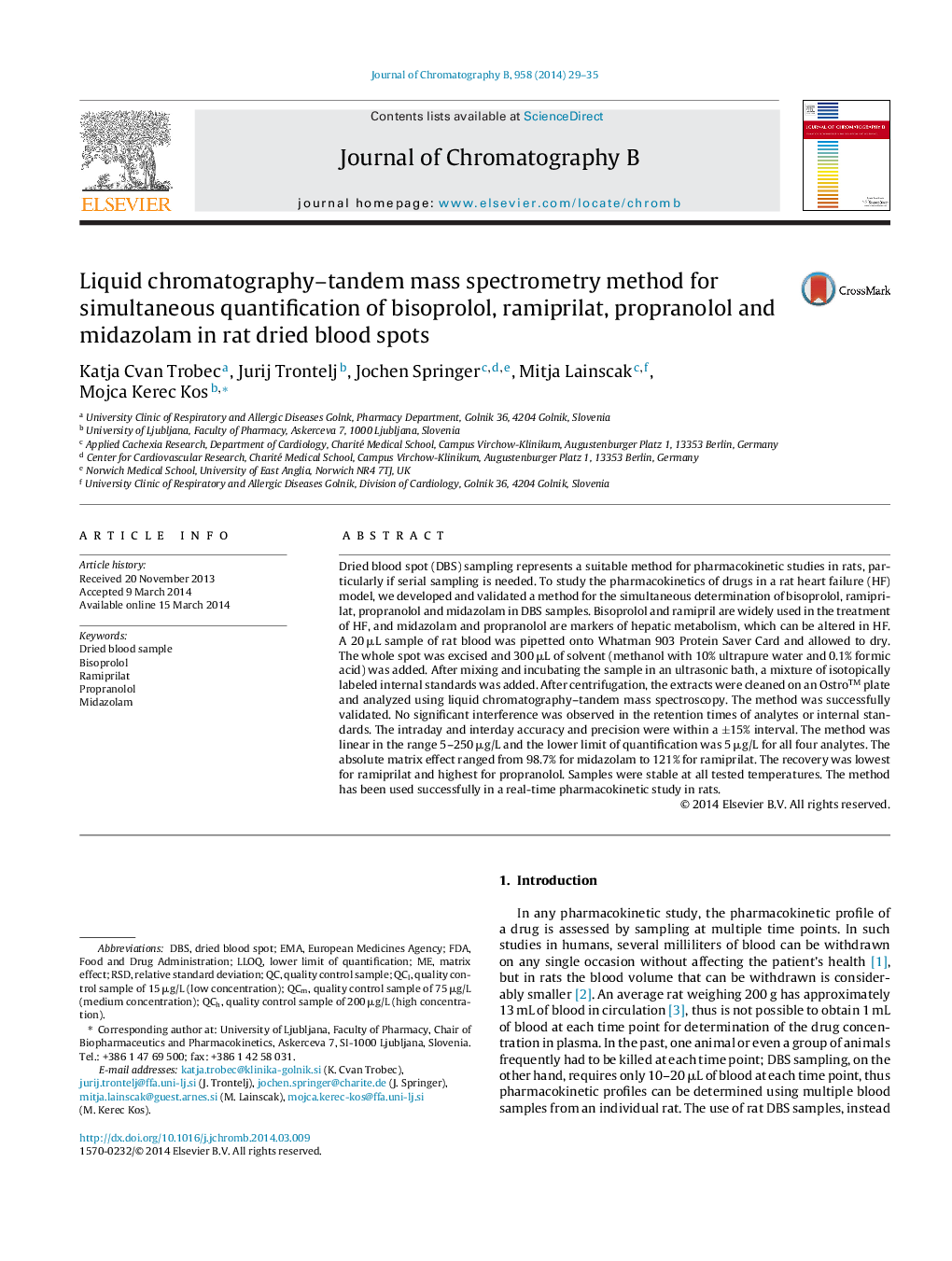| Article ID | Journal | Published Year | Pages | File Type |
|---|---|---|---|---|
| 1212565 | Journal of Chromatography B | 2014 | 7 Pages |
•The developed method enables a simultaneous determination of four drugs in dried blood spots in rats.•Bisoprolol, ramiprilat, propranolol, and midazolam were chosen to study their pharmacokinetics in rat heart-failure model.•The method was validated according to the FDA and EMA guidelines for bioanalytical method.•The method suitability was demonstrated on a pharmacokinetic study in rats.
Dried blood spot (DBS) sampling represents a suitable method for pharmacokinetic studies in rats, particularly if serial sampling is needed. To study the pharmacokinetics of drugs in a rat heart failure (HF) model, we developed and validated a method for the simultaneous determination of bisoprolol, ramiprilat, propranolol and midazolam in DBS samples. Bisoprolol and ramipril are widely used in the treatment of HF, and midazolam and propranolol are markers of hepatic metabolism, which can be altered in HF. A 20 μL sample of rat blood was pipetted onto Whatman 903 Protein Saver Card and allowed to dry. The whole spot was excised and 300 μL of solvent (methanol with 10% ultrapure water and 0.1% formic acid) was added. After mixing and incubating the sample in an ultrasonic bath, a mixture of isotopically labeled internal standards was added. After centrifugation, the extracts were cleaned on an Ostro™ plate and analyzed using liquid chromatography–tandem mass spectroscopy. The method was successfully validated. No significant interference was observed in the retention times of analytes or internal standards. The intraday and interday accuracy and precision were within a ±15% interval. The method was linear in the range 5–250 μg/L and the lower limit of quantification was 5 μg/L for all four analytes. The absolute matrix effect ranged from 98.7% for midazolam to 121% for ramiprilat. The recovery was lowest for ramiprilat and highest for propranolol. Samples were stable at all tested temperatures. The method has been used successfully in a real-time pharmacokinetic study in rats.
